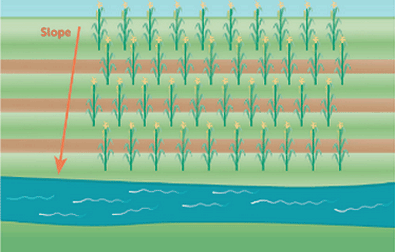Monday’s Lesson: Modeling an Agricultural System



Everything is connected. That’s the single most important lesson about human interactions with Earth systems. Unfortunately, it’s not that simple to teach.
Traditionally, we learn and teach about systems using tools that focus on the parts of a system and the interactions among them. But we cannot see all of the parts— or all of the processes—so we have to imagine their interconnections. To explore the system as a whole requires a different approach because the whole typically does not act merely as a sum of its parts.
The High-Adventure Science project, funded by the National Science Foundation, is developing Earth systems models that promote different facets of system thinking, including time delays, stocks and flows, and non-linear causality. Our goal is to help students and teachers alike explore phenomena that result from changes to a system and correlate this to the causal mechanisms. Earth systems visualizations and their dynamic outputs can help students see how systems respond to human actions in both expected and unexpected ways.
Modeling land use through system dynamics challenges
The goal of this lesson is to help students experience the behavior of the whole system and think about the reasons for this behavior. Using Earth systems models students explore the interrelationships of erosion and soil depletion using system dynamics. They also explore the relationship between climate, farming practices and plant types on food production.
Time delay, which refers to a lag between the initiation of an action and the effect, is a central feature for understanding the dynamic behaviors of systems over time.
Explore time delay related to soil quality in this model (page 1).
Set “Management Plan” for wheat (conservative tillage) in Zone 1 and wheat (intensive tillage) in Zone 2, and then run the model. You can see soil quality changing (represented by the color of the soil). How do these two different land use plans affect the soil quality? How does this experiment show that changes take time to emerge in a system?
Non-linear causality (or non-linearity) refers to cause-effect chains and loops; causes are not necessarily proportional to their effects. In the land use system, the relationships between precipitation, plant type, terrain and tillage each exhibit cause-effect chains and loops. Sometimes seemingly small changes have devastating effects on the system, and sometimes, they are undetectable.
Explore these relationships with this version of the model (page 2).
Set “Initial Landscape” to plain for each zone and “Climate” to “Use Precipitation- Slider Values.” Choose different plants in the two zones under “Management Plan.” Run the model and adjust the precipitation amounts. How does precipitation relate to plant growth? Erosion? Experiment with different terrain, climate and plant types.
So far, we have explored two system dynamics concepts. You can also use these models to explore other system dynamics concepts including stocks and flow, emergence and uncertainty.
Can we feed the growing population?
In our “Can we feed the growing population?” module students use these and other models to explore the availability of resources in an agricultural system in the context of food production. They explore how soil quality, nutrients, organic content, water and farming practices impact soil erosion and soil quality. They also consider how extended droughts or floods reverberate throughout the system.
Our goal is to maximize the potential of systems models for developing system dynamics thinking. We are optimistic that this approach has great potential.
Amy Pallant (apallant@concord.org) is a senior research scientist.
This material is based upon work supported by the National Science Foundation under grant DRL-1220756. Any opinions, findings, and conclusions or recommendations expressed in this material are those of the author(s) and do not necessarily reflect the views of the National Science Foundation.

